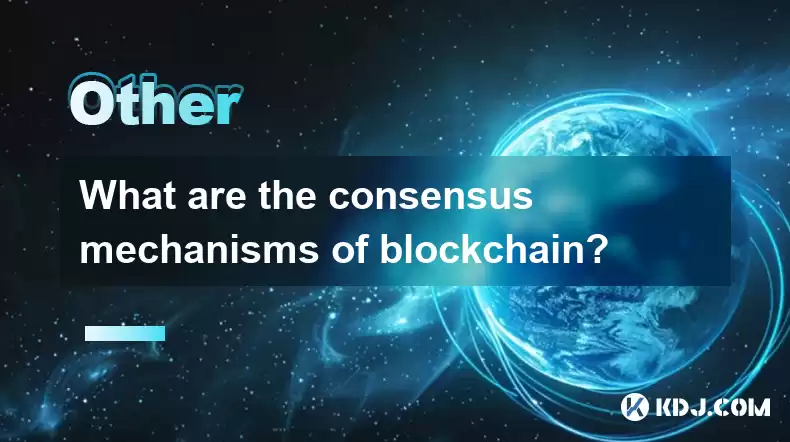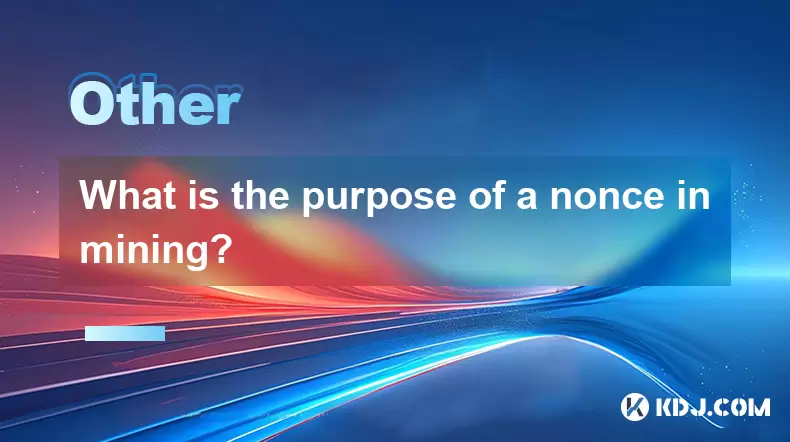-
 Bitcoin
Bitcoin $114400
0.68% -
 Ethereum
Ethereum $3550
2.48% -
 XRP
XRP $3.001
4.99% -
 Tether USDt
Tether USDt $0.9999
0.01% -
 BNB
BNB $757.6
1.46% -
 Solana
Solana $162.9
1.07% -
 USDC
USDC $0.9998
0.00% -
 TRON
TRON $0.3294
0.91% -
 Dogecoin
Dogecoin $0.2015
2.46% -
 Cardano
Cardano $0.7379
2.01% -
 Stellar
Stellar $0.4141
8.83% -
 Hyperliquid
Hyperliquid $37.83
-1.91% -
 Sui
Sui $3.454
0.76% -
 Chainlink
Chainlink $16.62
3.53% -
 Bitcoin Cash
Bitcoin Cash $554.6
2.84% -
 Hedera
Hedera $0.2486
3.91% -
 Ethena USDe
Ethena USDe $1.001
0.00% -
 Avalanche
Avalanche $21.95
3.34% -
 Toncoin
Toncoin $3.563
-2.85% -
 Litecoin
Litecoin $112.7
2.65% -
 UNUS SED LEO
UNUS SED LEO $8.977
0.13% -
 Shiba Inu
Shiba Inu $0.00001232
1.85% -
 Uniswap
Uniswap $9.319
2.93% -
 Polkadot
Polkadot $3.632
1.38% -
 Monero
Monero $307.2
2.36% -
 Dai
Dai $0.9997
-0.03% -
 Bitget Token
Bitget Token $4.340
0.91% -
 Pepe
Pepe $0.00001048
1.07% -
 Cronos
Cronos $0.1348
3.26% -
 Aave
Aave $261.5
1.93%
What are the consensus mechanisms of blockchain?
Consensus mechanisms in blockchain ensure consistent ledger updates by leveraging various techniques like Proof of Work's computational puzzles or Proof of Stake's stake-based verification.
Feb 16, 2025 at 12:00 pm

Key Points:
- Definition of consensus mechanisms
- Types of consensus mechanisms: Proof of Work (PoW), Proof of Stake (PoS), Proof of Authority (PoA), Proof of Elapsed Time (PoET), and Delegated Proof of Stake (DPoS)
- Benefits and drawbacks of each consensus mechanism
- Use cases of different consensus mechanisms in various blockchain applications
Article Content:
1. Definition of Consensus Mechanisms
Consensus mechanisms are fundamental components of blockchain technology that establish a process for validating and adding blocks to a distributed ledger. Their primary purpose is to ensure that all participants in the blockchain network agree on the state of the ledger, preventing double-spending and maintaining the integrity of the blockchain.
2. Types of Consensus Mechanisms
Multiple consensus mechanisms exist, each with its own advantages and disadvantages:
a. Proof of Work (PoW)
PoW is the original consensus mechanism used in Bitcoin. It requires miners to expend computational resources to solve complex mathematical problems to add new blocks to the blockchain. The first miner to find a solution broadcasts the block to the network for verification and inclusion. PoW's energy-intensive nature has attracted criticism for its environmental impact.
b. Proof of Stake (PoS)
PoS is an alternative consensus mechanism that rewards validators for holding and staking their crypto assets. Instead of solving computational puzzles, validators are randomly selected based on the amount of stake they have in the network. The validator with the most stake has a higher probability of being chosen to validate new blocks and receive rewards. PoS is generally more energy-efficient than PoW.
c. Proof of Authority (PoA)
PoA relies on a group of pre-defined validators who are responsible for maintaining the blockchain. These validators are typically reputable entities or individuals chosen by the network participants. PoA is faster and more scalable than PoW or PoS, but it sacrifices decentralization as the validators have greater control over the network.
d. Proof of Elapsed Time (PoET)
PoET is a consensus mechanism that leverages Intel's trusted execution environment (TEE) technology to select a random block proposer. The TEE ensures that the selection process is fair and tamper-proof. PoET is designed to enhance scalability and security for distributed systems.
e. Delegated Proof of Stake (DPoS)
DPoS is a variant of PoS where users delegate their voting power to a smaller group of representatives called delegates. These delegates are responsible for validating new blocks and managing the network's operations. DPoS is known for its high transaction processing speeds and scalability.
3. Benefits and Drawbacks of Each Consensus Mechanism
Each consensus mechanism offers specific benefits and drawbacks:
PoW Benefits:
- Decentralized and secure
- Proven track record in Bitcoin
PoW Drawbacks:
- Energy-intensive
- Slow and expensive
PoS Benefits:
- More energy-efficient than PoW
- Faster and scalable
PoS Drawbacks:
- Requires staking, which favors those with larger holdings
- May be prone to centralization
PoA Benefits:
- Fast and scalable
- Efficient and cost-effective
PoA Drawbacks:
- Less decentralized
- Requires a trusted group of validators
PoET Benefits:
- Fair and tamper-proof selection process
- Suitable for distributed systems
PoET Drawbacks:
- Relies on specific hardware support
- Limited availability
DPoS Benefits:
- Highly scalable and efficient
- Enables user participation through delegation
DPoS Drawbacks:
- May lead to centralization
- Requires trust in delegates
4. Use Cases of Different Consensus Mechanisms
Different consensus mechanisms are suitable for specific blockchain applications and use cases:
- PoW: Secure cryptocurrencies like Bitcoin and Ethereum
- PoS: Energy-efficient and scalable networks like Solana and Avalanche
- PoA: Private and permissioned blockchains for enterprise applications
- PoET: Distributed systems that require trusted execution environments
- DPoS: High-throughput and low-latency networks like EOS and Steem
FAQs:
1. Which consensus mechanism is the most secure?
PoW and PoS are generally considered the most secure consensus mechanisms as they leverage computational resources or staked crypto assets to ensure network stability and integrity.
2. Which consensus mechanism is the most energy-efficient?
PoS and PoET are known for their energy efficiency compared to PoW, which requires significant computational power.
3. Which consensus mechanism is the most scalable?
PoS and DPoS are typically more scalable than PoW and PoA, enabling networks to handle higher transaction volumes.
4. Which consensus mechanism is best suited for permissioned blockchains?
PoA is designed for permissioned blockchains where a trusted group of validators is responsible for maintaining the network.
5. Which consensus mechanism is used in Ethereum 2.0?
Ethereum 2.0 is transitioning from PoW to PoS to enhance scalability and sustainability.
Disclaimer:info@kdj.com
The information provided is not trading advice. kdj.com does not assume any responsibility for any investments made based on the information provided in this article. Cryptocurrencies are highly volatile and it is highly recommended that you invest with caution after thorough research!
If you believe that the content used on this website infringes your copyright, please contact us immediately (info@kdj.com) and we will delete it promptly.
- Cryptocurrency, Altcoins, and Profit Potential: Navigating the Wild West
- 2025-08-04 14:50:11
- Blue Gold & Crypto: Investing Disruption in Precious Metals
- 2025-08-04 14:30:11
- Japan, Metaplanet, and Bitcoin Acquisition: A New Era of Corporate Treasury?
- 2025-08-04 14:30:11
- Coinbase's Buy Rating & Bitcoin's Bold Future: A Canaccord Genuity Perspective
- 2025-08-04 14:50:11
- Coinbase's Buy Rating Maintained by Rosenblatt Securities: A Deep Dive
- 2025-08-04 14:55:11
- Cryptos, Strategic Choices, High Returns: Navigating the Meme Coin Mania
- 2025-08-04 14:55:11
Related knowledge

What is the purpose of a nonce in mining?
Aug 04,2025 at 05:56pm
Understanding the Role of a Nonce in Cryptocurrency MiningIn the world of cryptocurrency mining, the term nonce stands for 'number used only once.' Th...

What is the difference between on-chain and off-chain transactions?
Aug 02,2025 at 04:22pm
Understanding On-Chain TransactionsOn-chain transactions refer to digital asset transfers that are recorded directly on a blockchain ledger. These tra...

How are blocks linked together?
Aug 04,2025 at 06:56am
Understanding the Structure of a BlockchainA blockchain is a decentralized digital ledger composed of a sequence of blocks, each containing a list of ...

What is a node's role in a blockchain network?
Aug 03,2025 at 03:16pm
Understanding the Function of a Node in a Blockchain NetworkA node is a fundamental component of any blockchain network, acting as a participant that ...

How are transactions verified on a blockchain?
Aug 04,2025 at 12:35am
Understanding the Role of Nodes in Transaction VerificationIn a blockchain network, nodes are fundamental components responsible for maintaining the i...

What is the double-spending problem and how does blockchain prevent it?
Aug 02,2025 at 01:07pm
Understanding the Double-Spending ProblemThe double-spending problem is a fundamental challenge in digital currency systems where the same digital tok...

What is the purpose of a nonce in mining?
Aug 04,2025 at 05:56pm
Understanding the Role of a Nonce in Cryptocurrency MiningIn the world of cryptocurrency mining, the term nonce stands for 'number used only once.' Th...

What is the difference between on-chain and off-chain transactions?
Aug 02,2025 at 04:22pm
Understanding On-Chain TransactionsOn-chain transactions refer to digital asset transfers that are recorded directly on a blockchain ledger. These tra...

How are blocks linked together?
Aug 04,2025 at 06:56am
Understanding the Structure of a BlockchainA blockchain is a decentralized digital ledger composed of a sequence of blocks, each containing a list of ...

What is a node's role in a blockchain network?
Aug 03,2025 at 03:16pm
Understanding the Function of a Node in a Blockchain NetworkA node is a fundamental component of any blockchain network, acting as a participant that ...

How are transactions verified on a blockchain?
Aug 04,2025 at 12:35am
Understanding the Role of Nodes in Transaction VerificationIn a blockchain network, nodes are fundamental components responsible for maintaining the i...

What is the double-spending problem and how does blockchain prevent it?
Aug 02,2025 at 01:07pm
Understanding the Double-Spending ProblemThe double-spending problem is a fundamental challenge in digital currency systems where the same digital tok...
See all articles

























































































